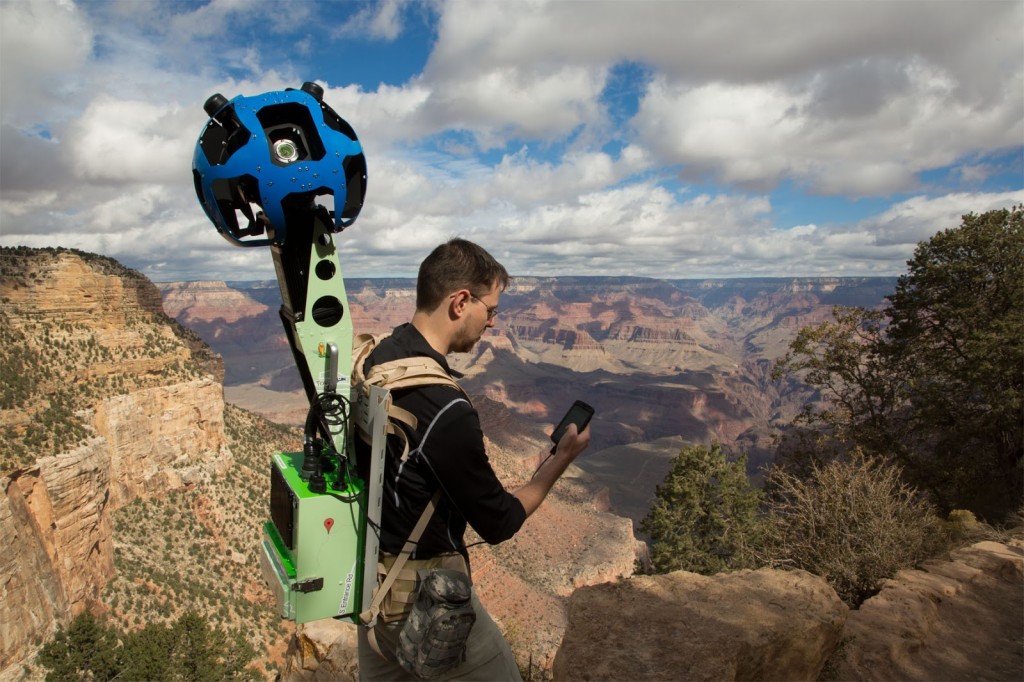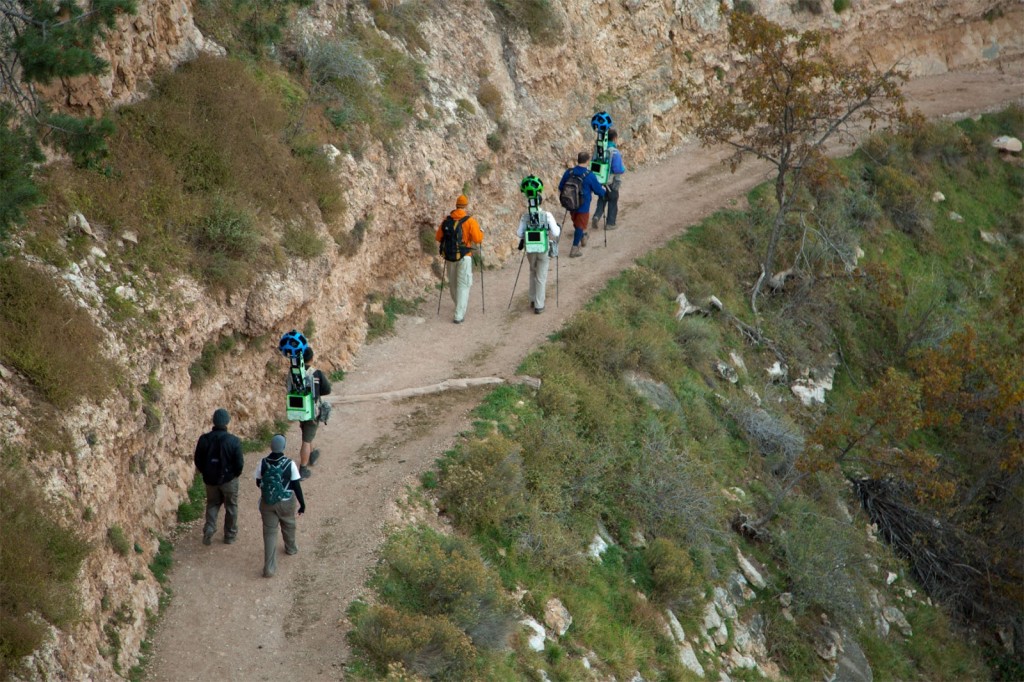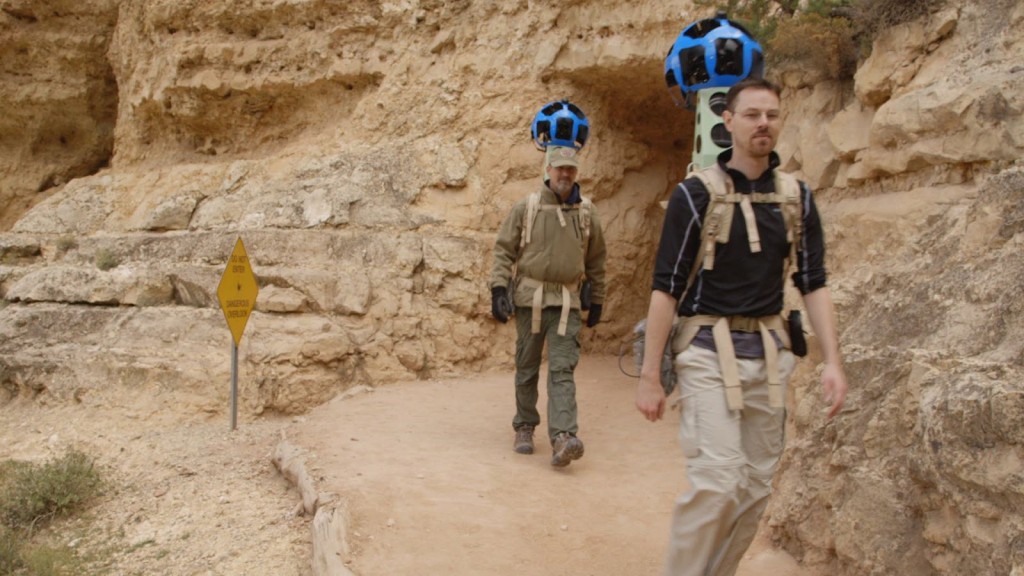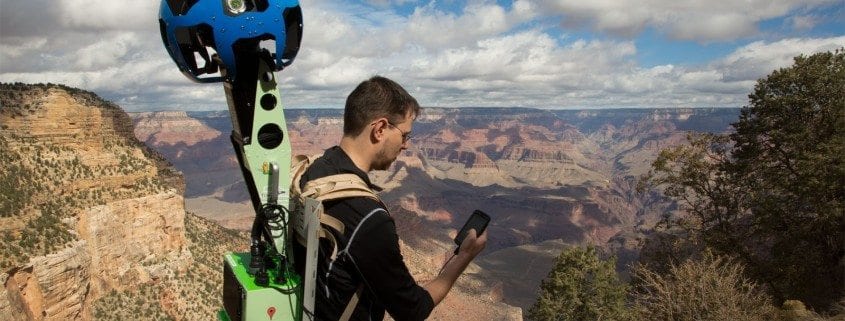Google Maps the Grand Canyon
Last month, a portable version of Google’s ‘orb of death’ was saddled up to a backpack and dragged on an exhausting hike around the Grand Canyon to collect pictures of the beauty for Street View’s latest wheeze. Once a highly unreliable, geo-specific technology (when it launched in 2007 you could only visit 5 US cities), Google’s interactive map now covers almost the entire Western world, with limited access in many other regions. While many remote regions have been covered before, such as Antarctica, this latest development marks the first time a vast area with no vehicular access will be available as part of the ‘interactive’ view. While other hard-to-reach regions are represented with a selection of photos, the aim here is to make virtually trekking the Grand Canyon as simple as going down 4th and Main Street.

The finished walk is still many months away from going live, but the simple fact that Google can even attempt this should make anyone sit up and take note. It’s easy to forget that, ten years ago, looking at a map meant doing just that: standing on the corner of a road, desperately trying to decipher all the yellow lines and squiggly bits while wondering where the hell north was anyway. Fast forward a decade and we find ourselves on the verge of creating Borges’ fabled map: an exact replica of the world conceived at a 1:1 scale. Obviously, this ‘total map’ is many years away, but given the speed with which technology advances, along with Google’s evident determination to push their most-significant USP, it seems conceivable that we will have the entire world available at our fingertips within a couple of decades.
The Future
Rumblings are already underway at Google HQ, with clunky hints being dropped about the development of ‘volunteer backpacks’. If they turn out to be true, we can prepare for a wholly unprecedented level of interaction in the gathering of data. At the very least, crowdsourcing a project like this will speed up the process, opening up innumerable hiking trails, places of interest and remote beauty spots. Used effectively, however, it could reveal impenetrable or inaccessible areas most of us could never hope to see. Mountaineers, cavers or explorers could bring us sights only ever seen by a handful of people; while clued-up locals could help map places inaccessible to foreigners. Imagine being able to visit Mecca between downloads, or the stunning Band-i-Amir lakes in Afghanistan; or picking your way through the ruins of Mogadishu, before popping off to Virunga National Park in D.R Congo at the push of a button. Street View may be interesting for exploring places we know, or are thinking of visiting, but its real use may one day be in uncovering the unknown. The likely outcome is not a jaded decline in tourism but an increase in interest – we want to fully experience what we can merely see for ourselves.

Is It Right?
All the same, you’re likely to feel at least a faint sense of reservation. Aside from the (somewhat trite) debate about our current need to surgically remove all mystery from the world, there are practical considerations. Do we want to live in a world where everywhere is cataloged, known and constantly visible? One of the ethical arguments of a digital world is whether we have the ‘right’ to be forgotten: just because I down sixteen Tequila shots and throw up in front of an iphone-carrying stranger, does that mean I deserve to have the picture floating around cyberspace for all eternity? Equally important may one day be the right to disappear. In a world without hidden corners, where everything and everywhere is monitored and unpicked by a billion virtual eyes, we may find anonymity becomes an impossible dream; privacy a distant memory.

In the long run, I suspect we will get far more good out of our ‘total map’ than bad. The possibilities outlined above are reason enough to be excited, without even touching on the vast democratizing influence of a project like this. At the end of the day, though, these are just the first tentative steps of a project that has and will continue to change our world. Where it will take us remains to be seen.
About the Writer
George Mason is a writer and researcher from the UK working at car rental company Sixt. He enjoys cycling and the occasional hike.



